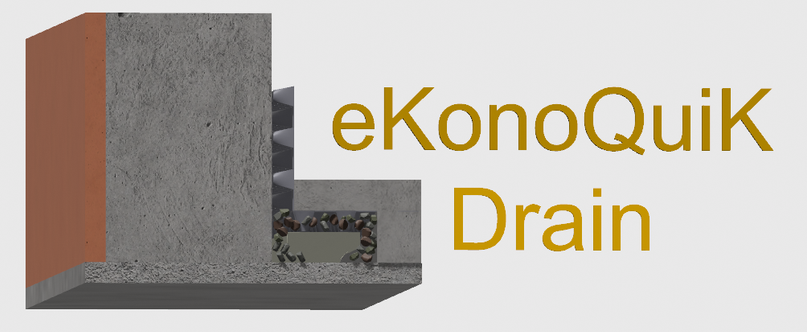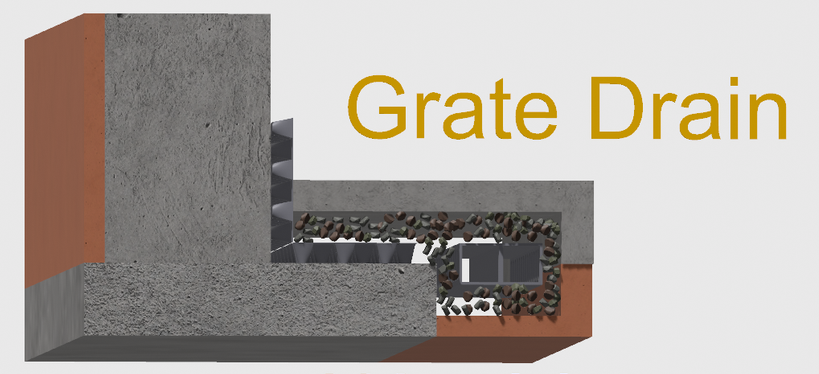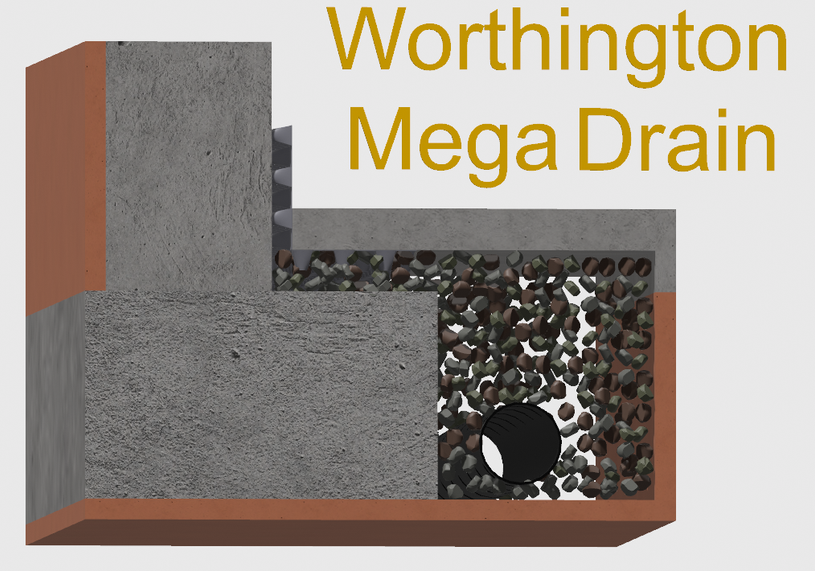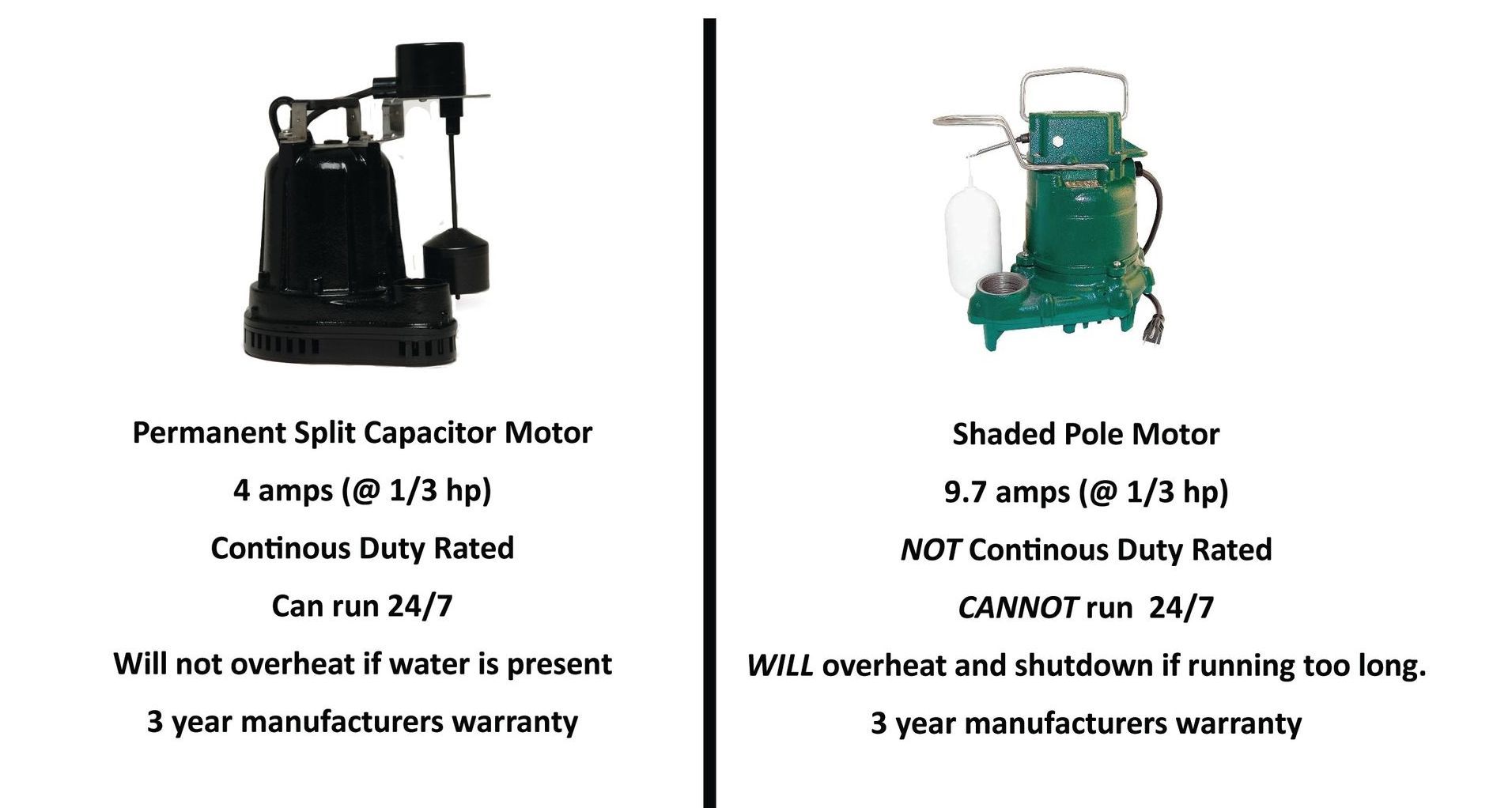How Does The Worthington MegaDrain Stand Up Against The Competition?
Not all drains are created equal. The Worthington MegaDrain is the LARGEST in the industry, has the highest holding capacity, and the highest velocity of any drainage system available. That is why we do it the way we do.
There are three main types of basement waterproofing systems that work well for most homes. However, if your foundation is stone or a monopour, not all of these options will be applicable. I’ll explain more about that below.
Assuming you have a typical block or poured concrete foundation, these are the systems available to you. As you review the diagrams, keep in mind that they are drawn to scale—so the differences you see between the systems accurately reflect their size and design.
Before we dive into what sets each system apart, let’s clarify a few key terms. The main differences between these systems come down to holding capacity, volume velocity, and pump type. Here’s what each of those means:
Holding Capacity: How much water will a system hold before it starts to crest over the top and get on the floor. That becomes important if you were to have a pump failure.
Volume Velocity: How fast can a system move how much water from point A to point B. Not a big deal during a small trickle, but a VERY important detail during a major summer thunderstorm.
Pump Type: There are two main types of pumps used in the waterproofing industry, and the difference between them is significant.
Historically—and still most commonly used today—is the Shaded Pole Motor pump. Most companies install a 1/3 HP version, which typically draws between 9–11 amps. The newer, more efficient option gaining popularity is the Permanent Split Capacitor (PSC) motor pump. Because of their efficiency, these pumps are often available in higher horsepower models. A 3/4 HP PSC pump, for example, usually draws only 5–7 amps.
Here’s why this matters:
All pumps are equipped with a thermal sensor that shuts the system down if it starts to overheat—this is a safety feature to prevent fire or explosion. The higher the amp draw, the more heat the pump produces. At 9–11 amps, shaded pole motors are much more likely to trip the thermal shut-off during heavy usage—exactly when you need them most.

Top-of-Footer Drainage System:
The most commonly installed drainage system in American basements today is called a Top-of-Footer drain. Of the three main drainage options, it has the smallest size, the lowest holding capacity, and the slowest volume velocity—in other words, it’s the least effective.
Wait a second… did I just say it’s the most common and the least effective system? Yes, I did.
So how did that happen?
Simple: it’s the most financially advantageous option for basement waterproofing companies. Because it's smaller, it requires less labor, fewer materials, and shorter install times. That all adds up to higher profit margins.
That’s why many of the largest waterproofing companies across the country use this system. It’s not because it performs the best—it’s because it makes them the most money.
To make matters worse, most of these companies won’t even offer a warranty on this system unless you enroll in an annual maintenance plan (which you pay for) so they can flush the system out once a year.

“Barely Next to the Footer” Box System:
The next system we often see is what we call the "barely next to the footer" box system. Technically, it doesn’t sit on top of the footer—it’s installed beside it—but usually only 1–2 inches below the top.
Because it uses a box-style pipe, the drain itself is fairly shallow and only allows for a small amount of gravel, which limits both water collection and flow.
Interestingly, this system was developed by former "Top-of-Footer" drainage installers who grew frustrated with the number of callbacks and failures those systems were causing. While this design is a slight improvement, it’s still far from ideal in terms of depth, capacity, and performance—more of a half-step forward than a real solution.

The Worthington Mega Drain (WMD – Weapon of Mass Drainage):
The WMD is the largest and most effective system in the “next to the footer” class of drains—also known in the industry as “pipe and stone” systems. These systems were once the gold standard of basement drainage in America, back before MBAs came along and figured out how to boost profits by cutting quality (you know, the same way they did with your fridge, washing machine, and pretty much every other appliance you own).
The WMD stands out for having the highest holding capacity and fastest volume velocity of any system on the market. That means it can move more water, more quickly, from where it enters your home to the sump pump—keeping your basement dry even during the heaviest storms.
And in the rare case of a pump failure? The larger holding capacity buys you more time to get the issue fixed before water spills over onto your basement floor. In short, it’s built to perform, and built to last.

The final difference between one system and another lies in the type of pump used. It doesn't matter what type or how good of a drain you have if your pump isn't working or can't keep up. There are 2 main types of pumps. Shaded Pole Motor pumps, and Permanent Split Capacitor (PSC) pumps. The main thing to remember about these two pump types is AMPs. More Amps = More heat. Too much heat will cause a pump to shut off to prevent explosions. As you can see in the image to the left, a shaded pole pump runs at roughly twice the amperage of a PSC pump. This means a shaded pole pump WILL shut down in high volume situations. What is a 'high volume situation'? A hurricane? A Nor'Easter. Pretty much anytime a boat load of water is running through your system, a shaded pole motor is far more likely to shut down....right when you need it most. Needless to say, that is not acceptable to us here at Worthington. We use ONLY PSC type pumps.

